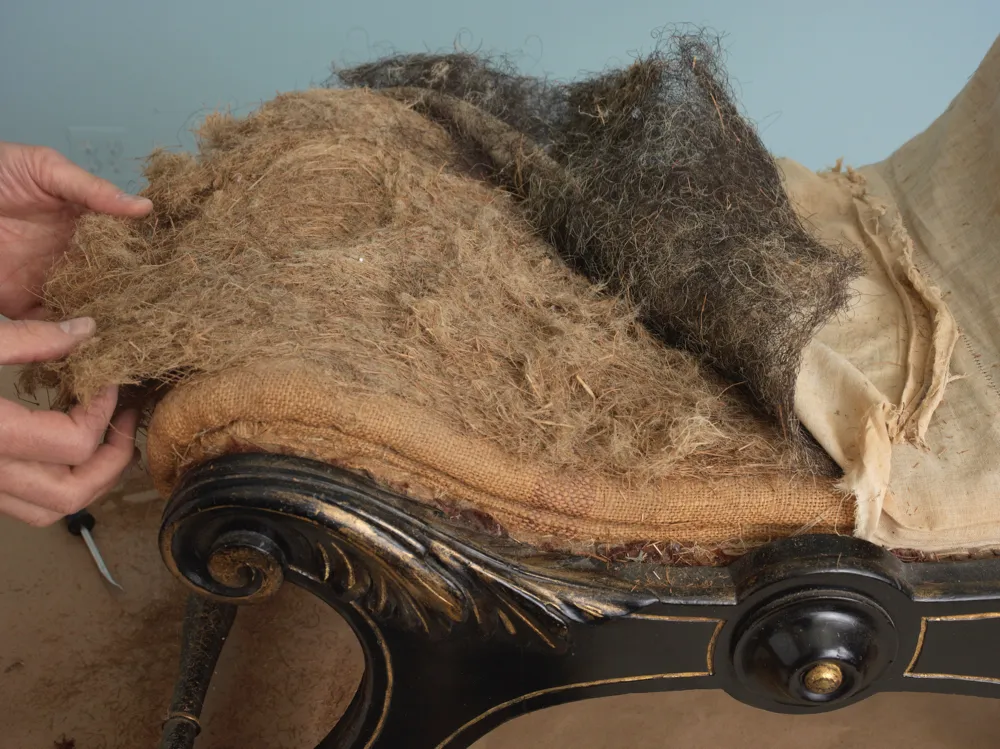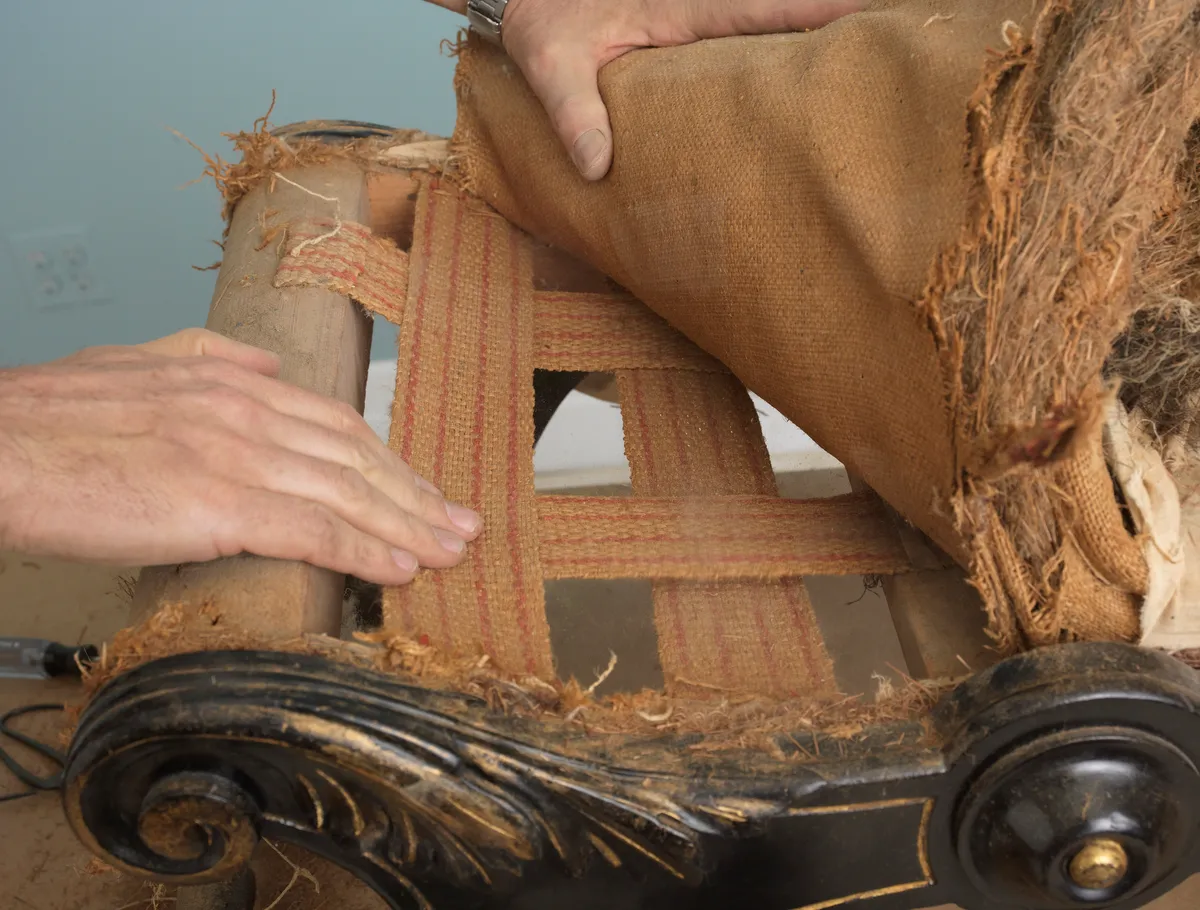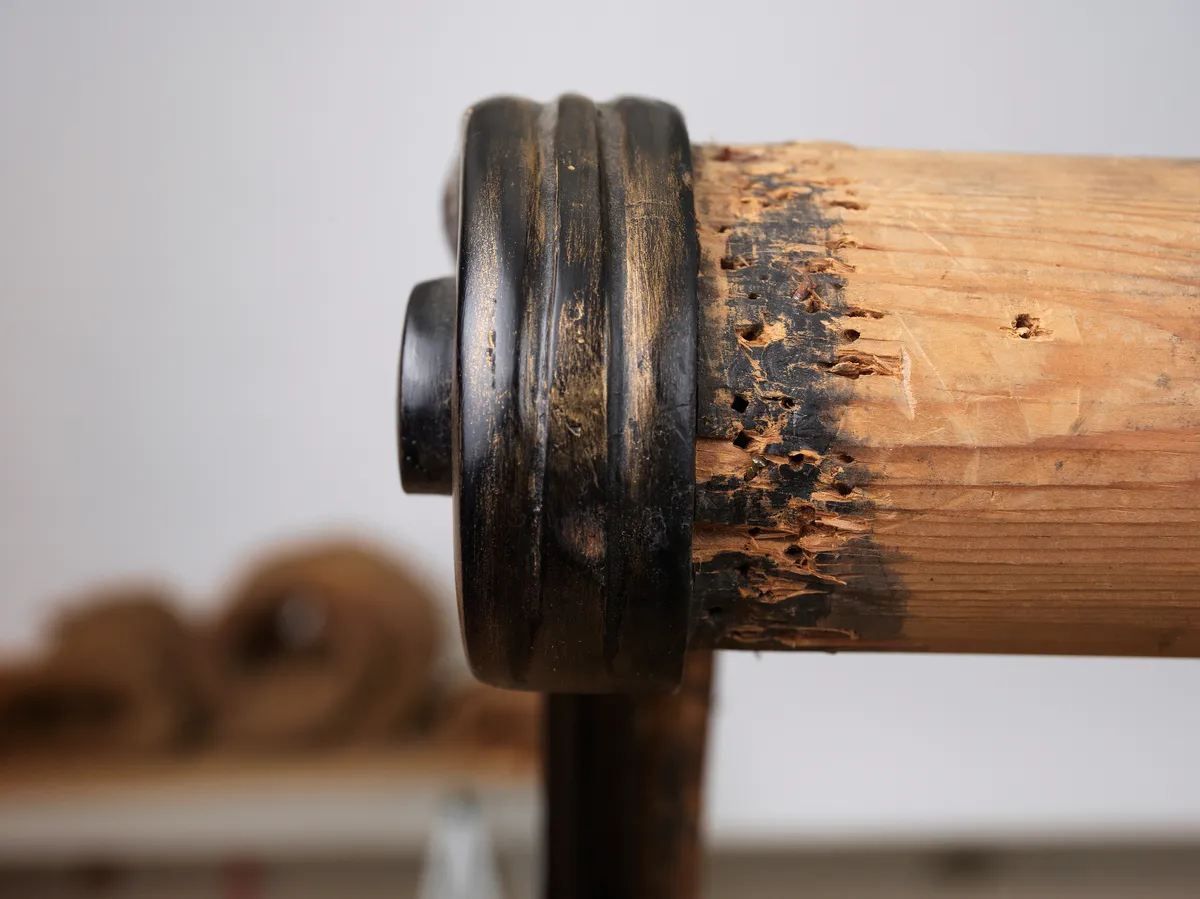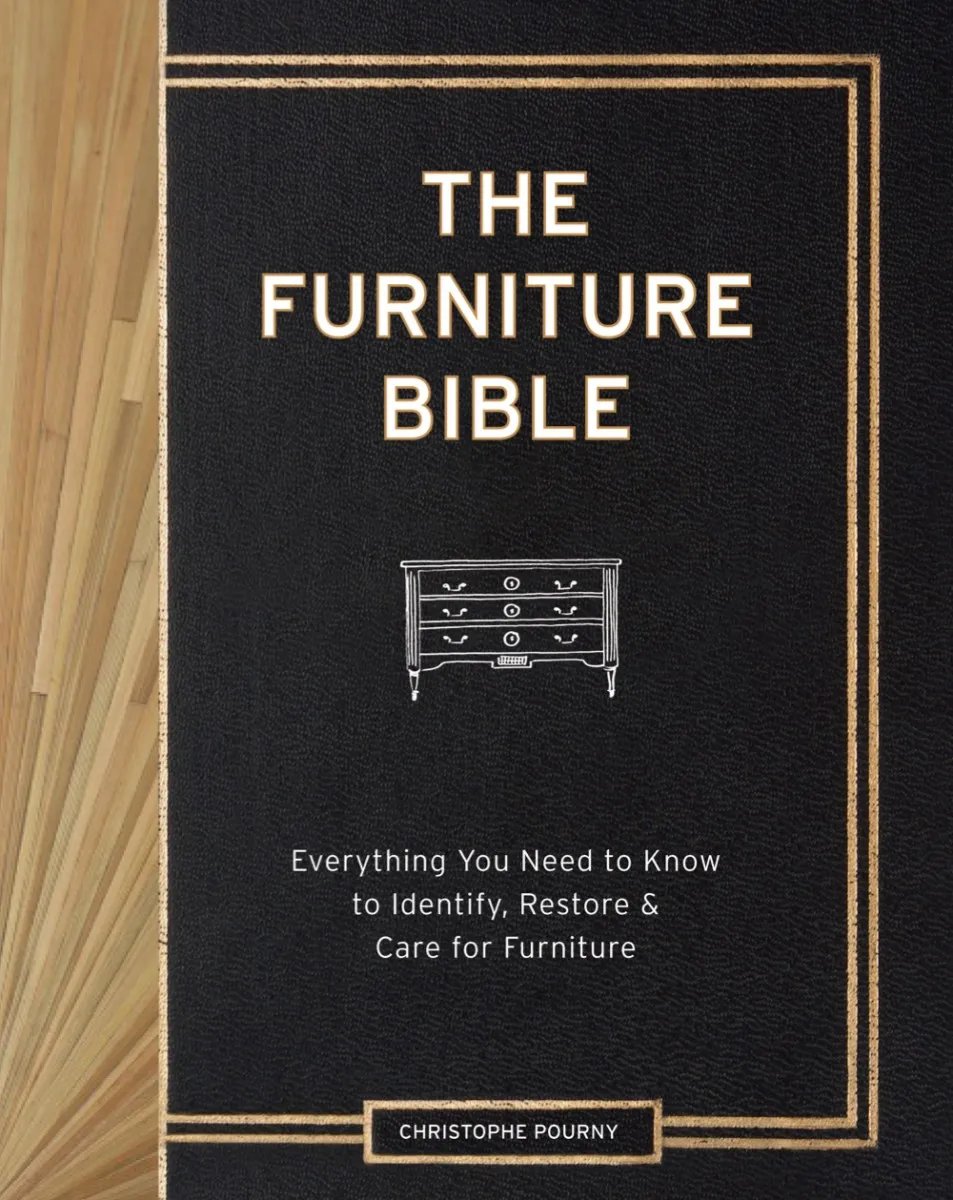To discover the anatomy of upholstery, Christophe dismantled an 1850s English Victorian chair to expose its underpinnings and then had it reupholstered in a custom-dyed deerskin with button tufting.
Top Fabric
Fabric will cover the top and bottom of the piece. Oftentimes, you’ll find antiques half-undressed, in their muslin dishabille.

Trims
The edge of the fabric is often studded with decorative brass nail heads and/or accentuated with passementerie: elaborate braided trimmings or edgings like tape, cords, and embroideries.
Muslin
This fabric underlayer, usually white, served to contain the padding below and keep dust from penetrating the seat. It also acted as a foundation garment of sorts, ensuring that the fabric cover smoothly on top.

Horsehair
You’ll typically find many layers of horsehair, in increasing degrees of coarseness from top to bottom, held together with hand stitching.
Tacks
The fabric layers are sutured to the frame with tacks. Tacks hold the fabric firmly in place, yet are easy to remove when needed—and impart minimal damage to the wood structure. Nail heads abutting one another keep the fabric from pulling or wrinkling.

Shredded Husks
Coarse palm or softer coconut fibers were often used to enhance the cushioning.

Jute or Burlap
This layer lends structure to the padding and anchors it in place. Details like this are the earmark of a job carefully done! A tight corner—see, it looks like a little sausage—helps preserve a crisp seat shape.

More of the Same
There are generally numerous layers, from rough to finer material: Rough burlap, coarse stuffing, finer burlap, finer stuffing, horsehair (wrapped in jute or muslin), then muslin—all held together with tacks and stitches.
Springs
Metal coils, secured by hand with rope.

Webbing
Heavy straps were woven across the frame, pulled tightly, and secured with tacks. In a traditional upholstery job, springs are hand-tied firmly in place atop the straps.

Frame
This armature is crafted of beech, a stable wood that’s both workable and light. Look how rough the wood surface is inside, where it’s unfinished: This is where you can really see how the finishing process enhances the wood.

In an excerpt from his new book, The Furniture Bible, the renowned furniture restorer Christophe Pourny takes you through the upholstery of an 1850s chair layer-by-layer
Most people are awed to discover the exquisite handiwork and fine materials that make up traditional upholstery. This is especially true of those familiar with the guts of a contemporary piece, padded with synthetic foam and affixed to a wood-composite frame via staples. Historical furniture, in contrast, was crafted on a much more refined level, with myriad support layers designed to cosset the sitter and uphold the seat shape over time. Acquainting yourself with the ingredients of period upholstery will help you identify pieces of value—and know what to ask for when getting a seat reupholstered. Luckily, it is still possible to find devoted practitioners of these old-school methods.

Copyright © 2014. Photographs by James Wade